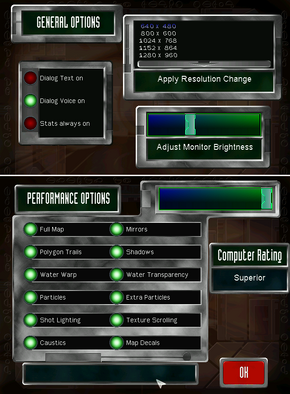Star Wars: Episode I - The Phantom Menace
From PCGamingWiki, the wiki about fixing PC games
Revision as of 04:32, 6 September 2014 by Garrett (talk | contribs) (→Issues unresolved: replaced steps with link to Virtualization page)
This page is a stub: it lacks content and/or basic article components. You can help to expand this page
by adding an image or additional information.
| Cover image missing, please upload it | |
| Developers | |
|---|---|
| Big Ape Productions | |
| Publishers | |
| LucasArts | |
| Release dates | |
| Windows | April 30, 1999 |
| Mac OS (Classic) | February 4, 2000 |
Key points
- 64-bit systems need a workaround for the 16-bit launcher; see Installing on 64-bit versions of Windows.
General information
- Wookieepedia - A huge wiki dedicated to the Star Wars universe
- The Phantom Menace at LucasForums
Availability
| Source | DRM | Notes | Keys | OS |
|---|---|---|---|---|
| Amazon.com |
Essential improvements
Patches
Game data
Configuration file(s) location
Save game data location
Video settings
Widescreen resolution
| Instructions |
|---|
Input settings
Audio settings
Issues fixed
Installing on 64-bit versions of Windows
- The 16-bit installer can't be used on 64-bit versions of Windows so the game must be installed manually.
| Instructions |
|---|
Issues unresolved
Could not initialize graphics hardware
- Error that pops up when starting a game. This problem can be solved in a future with development of DXGL project.[1]
- One workaround is to use a virtual machine (see Virtualization).
System requirements
| Windows | ||
|---|---|---|
| Minimum | ||
| Operating system (OS) | 95, 98 | |
| Processor (CPU) | Pentium 200MHz | |
| System memory (RAM) | 32 MB | |
| Hard disk drive (HDD) | 125 MB | |
| Video card (GPU) | Direct3D compatible 4 MB of VRAM |
|
References
- ↑ Tested by Suicide machine- game crashes, but it's evidently because DXGL (v. 0.5.1) lacking 3d specific functions at the moment.

